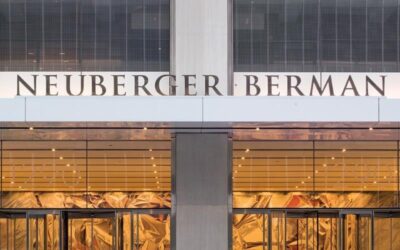A strong exit market since the height of the pandemic last year has translated into high returns for alternatives funds, according to Preqin’s annual sector report published in partnership with Amundi.
For private equity and venture capital funds that started investing in 2018, the median net internal rate of returns stand at 22%.
Although analysts at Preqin have warned that this is only an indicator of future performance, due to the funds still being in the early years of investing, they also found that for 2011 to 2017 vintages IRRs have risen by one to four percentage points, to between 14% to 19.4%.
This was driven by the rapid recovery in stock markets and corporations seeking acquisitions, which in turn resulted in a buoyant exit market.
Free Webinar: The Primary Step in Creating Value: How the Right Corporate Governance Can Drive Growth
- To what extend can the relationship between the GP and board impact the company?
- How can GPs ensure trickle down change in organisations?
- How can technology help bridge the gap between GPs and management boards?
As of December 2020 Europe-based alternative asset fund managers held €2.06tn in assets under management, up 13% year-on-year. This is set to continue growing as investors look to allocate more money to alternatives following the pandemic.
‘Real assets will be the winning bet for a post-Covid world. Most notably, a new post-Covid cycle could see a resurgence of inflation and continue to drive capital towards these asset classes which offer protection against inflation and the prospect of higher returns,’ said Dominique Carrel-Billiard, global head of real assets at Amundi.
‘Real assets can help to meet the economic challenges posed by the Covid recovery and fulfil investor expectations on both performance and impact, notably by helping allocate capital towards the energy transition. As such it is crucial to make real assets accessible to a wider range of savers.’
He added that private equity markets should offer a possible risk premium of 230bps in the US and 200bps in Europe compared to listed equities. Real estate and infrastructure on the other hand, should offer risk premiums of 390 bps and 300 bps respectively, compared to investment grade bonds.
‘Such a sizable spread of anticipated yields should accelerate capital flows into real assets as investors seek to optimize their risk/return trade-off,’ he said.
Alternatives are already on track to set a new fundraising record this year, with €159bn of capital raised in the first six months of the year by more than 500 Europe-based funds.
Private equity and venture capital accounted for half of that, Preqin found. The biggest growth area was infrastructure, which made up 15% of the total capital raised, up from 6% in 2011.
Mark O’Hare, founder and CEO of Preqin, said: ‘We are ready to see Europe’s economies reach new records in 2021, optimistic that they are on the road to recovery following the pain of the pandemic.
‘Our discussions with Europe-focussed investors confirm that they are ‘sticking with the program’ as regards their allocations to alternative assets: faced with uncertainty and diminished returns across all asset classes, the attractions of alternative assets—including innovative green investment opportunities—remain compelling.’
Deals in private markets also had a good start to the year, with €236bn of transactions completed in the first six months of the year already nearing 2020’s full year total of €284bn.
The UK continues to be the largest market in alternatives, however, the share of AUM managed by UK-based general partners has declined from 59% to 52% between 2010 and 2020. There were €85bn of private capital deals in the UK, already equal to the 2020 total.
But France is catching up. Funds based in the country have surpassed the €50bn mark achieved in 2020. At the end of 2020, private capital AUM was €216bn, up 19% year-on-year.
Source: City Wire
Can’t stop reading? Read more
Luckin investor Centurium in talks over £1bn Costa Coffee takeover
Luckin investor Centurium in talks over £1bn Costa Coffee takeover Centurium Capital, the Chinese...
“Cash is king, and anything else is an opinion”: private equity’s return to fundamentals
“Cash is king, and anything else is an opinion”: private equity’s return to fundamentals After a...
Neuberger Berman closes $7.3bn private debt fund, surpassing target
Neuberger Berman closes $7.3bn private debt fund, surpassing target Neuberger Berman has announced...




